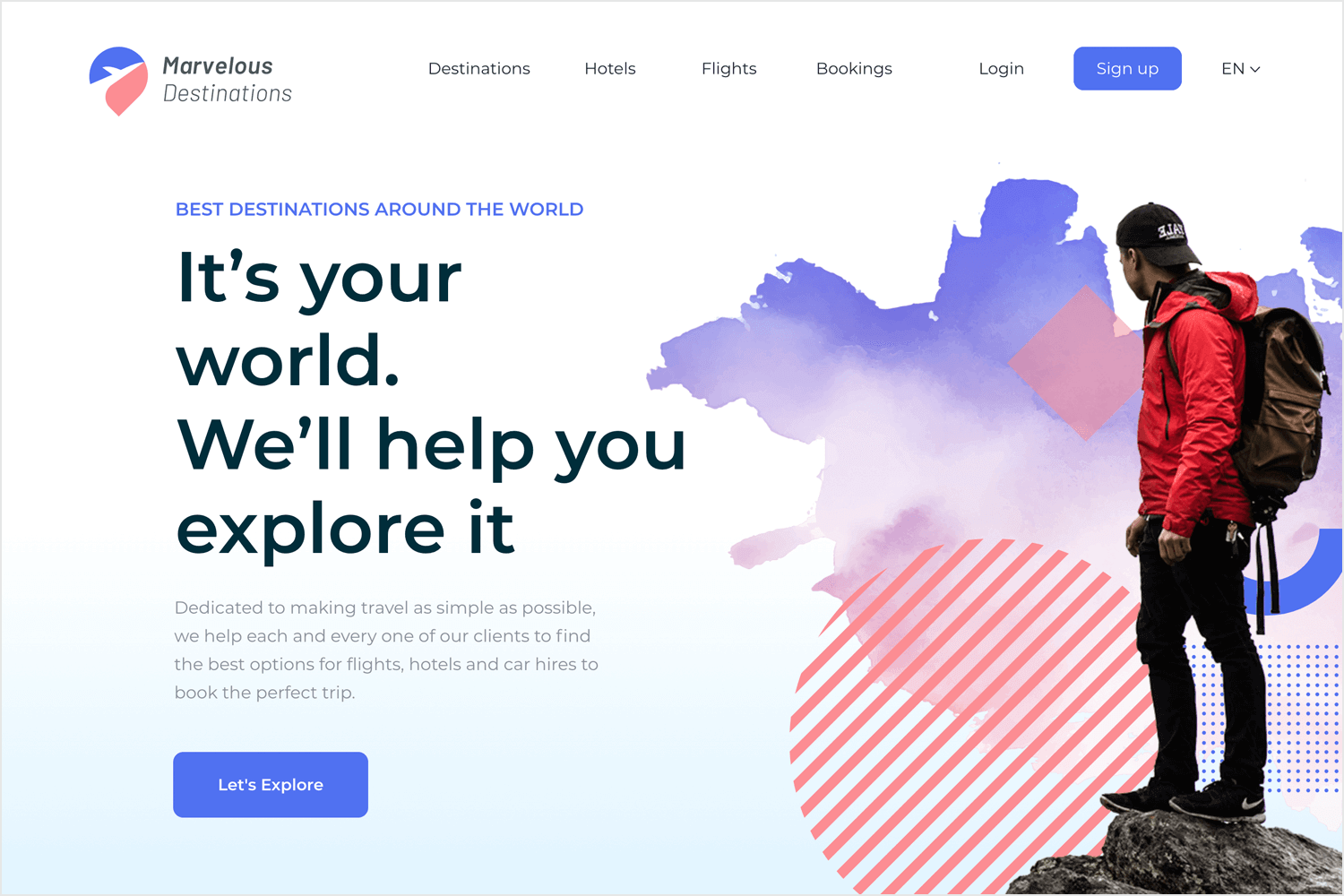Website Design Ideas to Improve User Interest
Wiki Article
Necessary Principles of Site Design: Creating User-Friendly Experiences
By focusing on user demands and preferences, developers can promote engagement and complete satisfaction, yet the implications of these concepts expand past mere capability. Understanding exactly how they intertwine can significantly affect a website's overall performance and success, triggering a more detailed evaluation of their individual duties and cumulative influence on individual experience.
Significance of User-Centered Style
Prioritizing user-centered layout is crucial for producing effective websites that fulfill the requirements of their target audience. This method puts the user at the leading edge of the design process, guaranteeing that the internet site not only operates well yet also reverberates with users on an individual level. By comprehending the users' preferences, goals, and behaviors, designers can craft experiences that cultivate interaction and fulfillment.
Moreover, embracing a user-centered design philosophy can lead to improved access and inclusivity, accommodating a varied audience. By thinking about numerous customer demographics, such as age, technical proficiency, and cultural histories, designers can produce websites that are inviting and useful for all.
Ultimately, prioritizing user-centered style not just boosts individual experience however can likewise drive crucial service results, such as raised conversion prices and client commitment. In today's competitive digital landscape, understanding and prioritizing individual needs is a critical success element.
Instinctive Navigation Structures
Efficient web site navigation is usually a vital element in enhancing user experience. Instinctive navigation structures enable customers to discover details quickly and successfully, lowering irritation and boosting involvement.To develop user-friendly navigation, developers should prioritize quality. Labels should be detailed and familiar to customers, preventing lingo or unclear terms. A hierarchical framework, with main classifications leading to subcategories, can even more help customers in understanding the partnership between different areas of the site.
In addition, including visual cues such as breadcrumbs can lead individuals via their navigating path, enabling them to quickly backtrack if needed. The addition of a search bar also boosts navigability, giving customers direct access to material without needing to navigate via multiple layers.
Receptive and Adaptive Formats
In today's digital landscape, guaranteeing that internet sites function effortlessly across various devices is crucial for user complete satisfaction - Website Design. Adaptive and receptive formats are 2 key techniques that allow this capability, dealing with the diverse variety of screen dimensions and resolutions that customers might experienceResponsive designs employ fluid grids and adaptable photos, allowing the site to immediately adjust its elements based on the screen dimensions. This technique provides a constant experience, where content reflows dynamically to fit the viewport, which is especially helpful for mobile users. By utilizing CSS media questions, designers can create breakpoints that enhance the format for various tools without the requirement for separate layouts.
Flexible formats, on the various other hand, make use of predefined formats for certain display dimensions. When an individual accesses the site, the server identifies the tool and offers the suitable layout, making sure an enhanced experience for varying resolutions. This can lead to quicker loading times and improved performance, as each layout is customized to the tool's abilities.
Both responsive and adaptive styles are critical for boosting customer interaction and fulfillment, eventually adding to the website's general performance in satisfying its objectives.
Regular Visual Power Structure
Developing a constant visual power structure is essential for directing users via an internet site's material. This principle ensures that details exists in a manner that is both interesting and intuitive, permitting individuals to quickly understand the material and navigate. A well-defined hierarchy uses numerous design components, such as dimension, spacing, color, and contrast, to create a clear distinction in between different kinds of web content.
Moreover, regular application of these visual signs throughout the site cultivates experience and depend on. Customers can swiftly learn to acknowledge patterns, making their communications a lot more reliable. Inevitably, a solid aesthetic pecking order not only boosts customer experience yet additionally boosts general website usability, motivating much deeper engagement and promoting the wanted activities on a web site.
Access for All Customers
Availability for all individuals is a fundamental element of website design that makes certain every person, no matter of their abilities or handicaps, can involve with and gain from online content. Designing with availability in mind involves applying methods that fit varied customer requirements, such as those with aesthetic, acoustic, electric motor, or cognitive disabilities.One essential standard is to stick to the Internet Web Content Accessibility Guidelines (WCAG), which offer a framework for developing easily accessible electronic experiences. This consists of utilizing enough shade contrast, supplying message choices for photos, webpage and guaranteeing that navigating is keyboard-friendly. In addition, employing responsive design techniques makes sure that websites function effectively across various tools and display sizes, even more enhancing accessibility.
Another critical factor is the usage of clear, concise language that stays clear of jargon, making material comprehensible for all users. Involving users with assistive innovations, such as display readers, needs careful focus to HTML semantics and ARIA (Obtainable Abundant additional reading Internet Applications) duties.
Ultimately, prioritizing ease of access not only meets lawful obligations yet likewise expands the target market reach, promoting inclusivity and boosting user complete satisfaction. A dedication to accessibility reflects a devotion to developing fair digital environments for all customers.
Conclusion
To conclude, the necessary principles of site layout-- user-centered style, instinctive navigating, receptive formats, regular visual power structure, and accessibility-- jointly add to the creation of easy to use experiences. Website Design. By focusing on user demands and guaranteeing that all individuals can properly involve with the website, designers improve use and foster inclusivity. These concepts not just improve user contentment but also drive positive company end results, ultimately demonstrating the vital relevance of thoughtful internet site design in today's digital landscape
These techniques supply very useful understandings right into user expectations and pain factors, making it possible for developers to tailor the web site's attributes and material appropriately.Efficient web site navigating is commonly an essential factor in boosting customer experience.Developing a regular visual pecking order is critical for directing customers via a website's material. Eventually, a solid aesthetic hierarchy not only boosts individual experience however also improves total website functionality, motivating deeper engagement and facilitating the wanted activities on an internet site.
These concepts not only boost individual satisfaction yet also drive positive company end results, inevitably demonstrating the crucial value of thoughtful internet site design in today's electronic landscape.
Report this wiki page